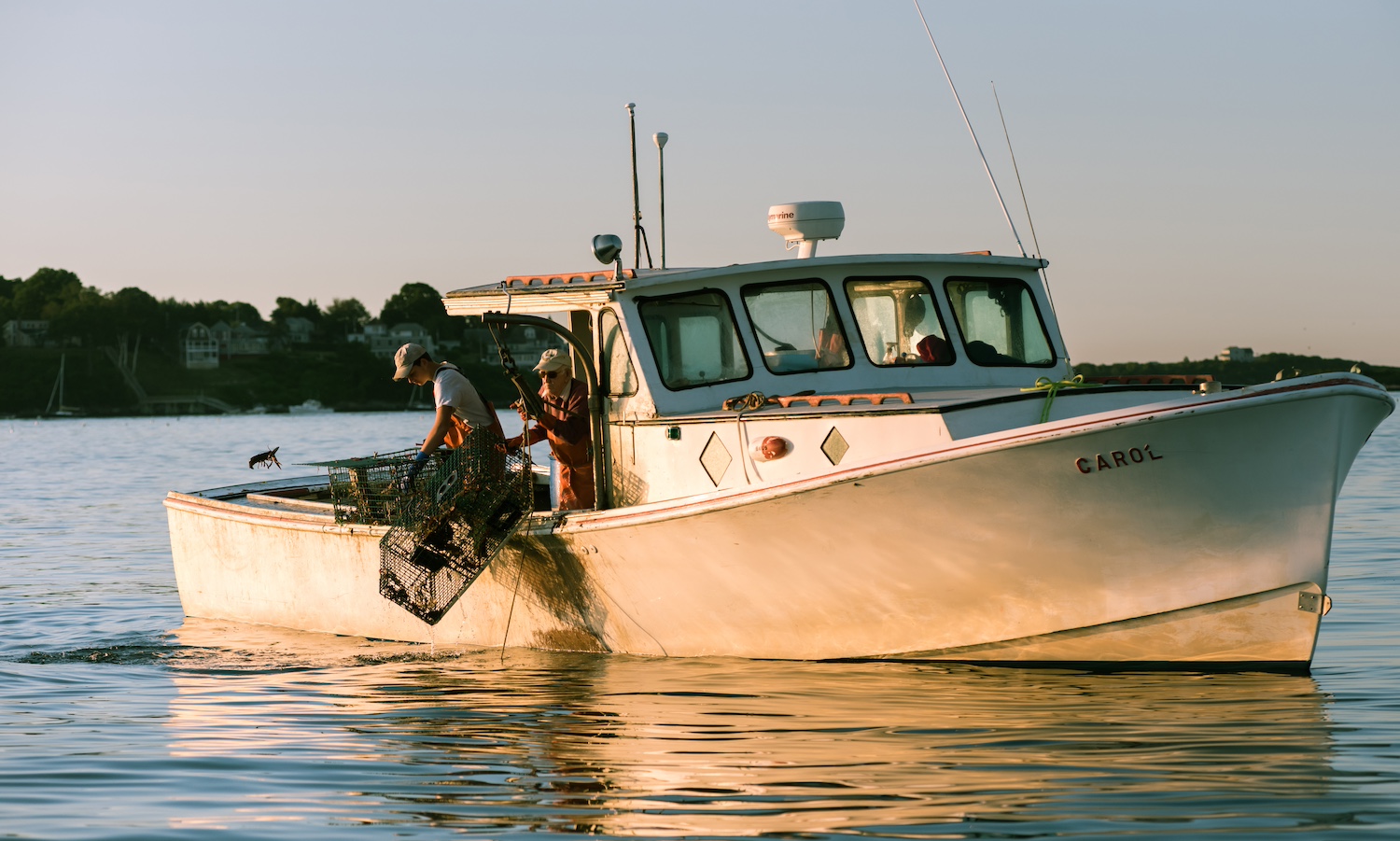Maine lobster fishers recently won reprieve on new federal regulations to protect the endangered North Atlantic right whales. According to the Maine’s Lobstermen Association, The regulations could dramatically change lobster fishing practices, impacting fishers and Maine’s island communities who depend upon this resource.
The North Atlantic right whale population is declining, with 340 individuals left and fewer than 70 breeding females, according to the Center for Biological Diversity. The Center finds fishing gear to be a leading cause in the species’ spiral towards extinction.
“During New England’s year-round lobster season, there are over 1 million vertical fishing lines connected to millions of heavy traps that rest on the ocean floor,” Ben Grundy, Associate Oceans Campaigner from the Center for Biological Diversity’s Ocean program, tells Food Tank. “This creates a dangerous maze for North Atlantic right whales and other marine animals to navigate without becoming entangled.”
The Center, alongside other conservation groups, spearheaded a series of federal initiatives in an effort to implement stricter fishing gear regulations and reduce the lobster fishery’s threat to right whales. According to Grundy, the debate around the federal fishing regulations comes down to one key question about National Oceanic and Atmospheric Administration (NOAA) Fisheries: Are they “adhering to its responsibilities to protect North Atlantic right whales as mandated by the Endangered Species Act and Marine Mammal Protection Act?”
In 2022, a federal court ruled in favor of the Center and other groups, finding that NOAA had violated the Endangered Species Act and Marine Mammal Protection Act, and was not doing enough to reduce the lobster industry’s threat to right whales.
But later that year, Maine’s congressional delegation inserted a six-year delay on new federal lobster fishing regulations into a US$1.7 trillion spending bill passed by Congress. The delay will avoid closures that could destroy the industry while allowing time for more research into how often whales enter prime fishing areas.
And in 2023, a federal appeals court side with the lobster industry, ordering the National Marine Fishers Series to re-work the most recent federal regulations to protect the right whales.
Grundy and other whale conservationists believe that the recent decisions are harmful for the species. “This six-year delay prioritizes the profits of the American lobster fishery over the protection of critically endangered North Atlantic right whales,” Grundy tells Food Tank.
But Maine’s community of lobster fishers are encouraged.
“It gives us time to take a breath,” Steve Train, a commercial lobster fisher from Long Island, Maine, tells Food Tank. “Some people think it might be the end of it all, but I think most people see a little light now that we can work under.”
According to Maine Lobster, Maine’s 5,000 self employed lobster fishers contribute an estimated US$1.5 billion to the state’s economy. Thus the proposed protection regulations could have devastating ripple effects for Maine’s lobster fishers, and the global lobster industry.
“In the last 25 years, there has been one documented entanglement of a North Atlantic right whale in Maine fishing gear,” Train says. “There have been zero documented fatalities of right whales in Maine lobster gear in the history of the fishery.”
According to Train, conservationists’ criticisms of Maine’s lobster industry are primarily rooted in their utilization of a co-occurrence model. This model calculates the likelihood of whale entanglements in Maine based on quantity of gear and probability, rather than historical entanglement data.
“Because we have the most gear and the most vertical lines, we strike red on the co-occurrence model and the more data we give them the higher we spike, even though they don’t have data on the whales and even though we’ve never killed one,” says Train.
Currently, conservationists and Maine lobster fishers both plan to use the next six years to gather additional data and bolster their respective arguments in time for the next regulatory debate.
For conservationist groups like the Center of Biological Diversity, this means the ongoing pursuit of research, public education, and advocacy for a federal mandate that compels a shift from traditional fishing gear to pop-up or on-demand gear in trap fisheries.
“This alternative fishing gear removes the need for persistent vertical lines connecting traps to surface buoys, allowing marine animals to move freely,” Grundy tells Food Tank. “It’s the only way to allow fishing to continue while eliminating the risk of entanglement.”
As the Maine lobster industry looks ahead to the next six years, Train believes further research and scientific evidence will demonstrate that they are not the source of the problem. In 2020, Maine lobster fishers adopted purple lines to mark their traps, hoping to prove that Maine is not responsible for whale deaths. In the spring of 2022, federal regulations went into effect requiring color-coded rope sections by state—purple for Maine, yellow for New Hampshire, red for Massachusetts, and silver gray for Rhode Island.
“We have done so much to maintain this resource for years to be sustainable,” says Train. “Nobody has ever doubted our practice or tactics, so to have some of these other organizations come in and attack our sustainability criteria because of something else has been a [challenge].”
This article was written by Liza Greene.
Articles like the one you just read are made possible through the generosity of Food Tank members. Can we please count on you to be part of our growing movement? Become a member today by clicking here.
Photo courtesy of Nils Caliandro











